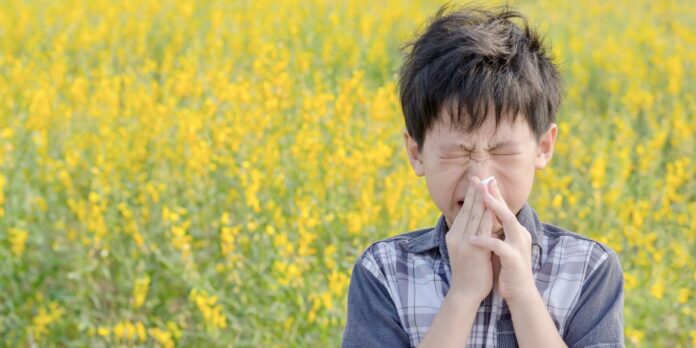The appearance of pollen typically marks the beginning of spring, and it literally shows. If your vehicle or home recently received a natural paint job, there is a positive meaning behind the new look. According to Alabama Cooperative Extension System experts, people should view pollen in a different shade other than yellow.
What is pollen?
Simply defined, pollen is a powder-like substance that is produced by flowering plants and trees. Every tiny grain of this substance contains reproductive material known as male gametes that are used in fertilization of flowers–ultimately producing a seed. According to Alabama Extension Home Grounds Regional Agent Mallory Kelley, humans have a direct relationship with pollen.
“Without pollen we would not exist,” Kelley said. “We can thank it for all of our fruits and vegetables that we eat every day.”
Kelley explains that pollen is released differently by each plant and at different temperatures and times of the year. For example, when cool crops such as cabbage, kale and broccoli receive consistently warmer temperatures, their natural defense is to begin reproducing. The plant(s) will begin to grow longer shoots to produce flowers and begin pollinating.
As a secondary reaction, bees will also begin pollinating these plants as well. Pollen is primarily transported by insects and wind–causing everyone to see it latch onto virtually everything in sight.
Where does it all come from?
In 2023, the common association of pollen’s coming out party with a particular month of the year has not proven to be accurate. Alabama’s consistent warmer temperatures during February has caused plants to begin pollinating earlier than usual.
“Temperature certainly has an effect on pollen dispersal,” said Drew Metzler, an Alabama Extension forestry and natural resources regional agent. “In most years, I typically don’t see pine pollen dispersal in central Alabama until mid-March. Because we have had a string of consistently warm weeks in February and early March, it has accelerated the dispersal process by several weeks.”
According to Metzler, all trees in Alabama pollinate including hardwoods and pines. In order to produce a viable offspring, cross pollination is necessary for trees to produce seeds. Trees are pollinated primarily by insects, birds and wind. Some examples of wind-pollinated trees are Southern yellow pines (i.e., loblolly, longleaf, shortleaf and slash) as well as oaks.
“Because they are dependent upon wind pollination, these trees tend to saturate the air with pollen because it is dry and light, allowing it to travel through the air for miles,” Metzler said. “Pine pollen is the most notorious because it tends to be much larger than hardwood pollen. This is the reason why people can literally see clouds of it this time of year–both in the air and when it settles on vehicles and homes.”
Remedying a Sticky Situation
For those who are not fans of pollen–especially those with seasonal allergies–any remedy for removing or avoiding pollen is welcomed. Spring normally brings frequent rains that knock it out of the air as well as off of vehicles, roofs and outdoor furniture.
“We are used to getting more consistent rainfall,” Kelley said. “We have been more dry than normal, so we need more rain to arrive.”
Other practices to prevent pollen from interfering with everyday activities are listed below.
- Bring in outdoor furniture cushions to reduce exposure.
- Keep windows closed so that pollinated air doesn’t infiltrate your home.
- Exercise inside rather than outside.
- Take showers more frequently–especially prior to going to sleep to reduce potential contamination in bedding.
- Bathe pets more often because their fur typically carries pollen granules much like human hair.
A Different Point of View
Although pollen can be overwhelming at times, it serves as a perennial reminder of life’s cycles. The old saying doesn’t curse the rain applies in the same fashion to pollen. Too much rain (in this case pollen) can have negative effects; however, its purpose is pure, and many forms of life rely on it. Each season when everything seemingly has a yellow tinge, remind yourself that nature is at work–ensuring that our everyday needs are met.
For more information on pollinating plants and pollinators, search pollen in the search bar of Alabama Extension’s website, www.aces.edu.




